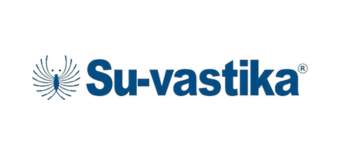Optimizing Battery Performance: Tubular Battery 12V Battery Equalization
The Science Behind Tubular Battery 12V Battery Equalization, Su-vastika has developed a new approach to equalizing cells in tubular lead acid batteries of single battery 12V. The biggest challenge faced by Inverter/UPS is that once the Tubular battery is installed then after a year or so the 6 cells in a 12V battery do not get equally charged and discharged. As the sulfation start building on the plates as the tubular battery is kept on state of charge for long and the regular charger of inverter has no such property to vary the boost voltage and float voltage based on temperature and break the sulfation after every 10 to 20 cycle once.
During the process, one of the cells in the tubular battery gets overcharged and the rest of the cell remains undercharged. So let us take an example of charging of Tubular battery of 200 Ah when we charge this battery with 20 Amps charging current the battery keeps charging with the charging current and stops the battery charging at 14.4 volts. At this stage, all 6 cells have to be charged at 2.4 Volts to make them equal which is not the case as when the battery is used for more than one year the cell balancing starts getting imbalanced. So when we charge the battery with the higher charging current which happens in Solar charging as the solar charge controllers used in the market with higher rating of solar panels tend to put more charging current in the Tubular battery. This becomes the major reason for the water in the battery getting evaporated and cells getting hard and the equalization is affected the most. So at Su-vastika we have inbuilt this new charging technique using AI in our product range of Pure Sinewave UPS having ATC models to start with.

The Science Behind Tubular Battery 12V Battery Equalization

The Science Behind Tubular Battery 12V Battery Equalization
Here’s a breakdown of the key points:
- Battery Type: Tubular lead acid battery (common for deep cycle applications) of any make and size from 100 Ah to 200 Ah capacity.
- Battery Voltage: 12V (made up of 6 individual cells, connected in series)
- Process: Cell Equalization – balancing the charge level between all 6 cells for optimal performance and lifespan. This equalization happens automatically during the charging process. The battery boost voltage and the float voltage is varied based on the temperature after a certain cycle period and the battery is subjected to higher voltage charging for boost and float compared to normal charging voltages. Su-vastika has a patented technology where we have increased the life of the battery through the charging technique using Artificial Intelligence.
- Technique: Variable charging – adjusting the charging current and voltage for individual cells as needed. Giving rest time during the charging and the battery equalisation The temperature based boost voltage and float voltage changes helps the battery to equalise all it’s cells as the gravity of each cell becomes almost equal. The cell voltage can be maintained up to 20 mV variation between the cells. If the internal cells of a Tubular battery do not have more than 100 mV variation in each cell then the battery can easily last for 4 to 5 years provided the battery watering is done on time and the battery discharge current is not more than 40% of its capacity.
Su-vastika’s Innovation:
- AI-based software: This software likely analyzes data from the battery (voltage, current, temperature) and after every few cycles changes the voltages for boost and float and makes gassing inside the battery which creates bubbles inside the battery and this in turn improve the gravity equalization in each cell.
- Patent-pending technology: This suggests Su-vastika’s approach is novel and offers potential advantages over existing methods.
Potential Benefits:
- Improved battery performance: By ensuring all cells are equally charged, the battery can deliver its full capacity and power.
- Extended battery life: Equalisation can help reduce sulfation, a major factor in battery degradation.It can increase the battery life minimum of one year if the battery watering is also done on time.
- Reduced maintenance: Automated and precise equalization could minimize manual intervention.
Overall, Su-vastika’s approach using AI and variable charging has the potential to be a significant advancement in tubular lead acid battery technology.

Here are some additional thoughts to consider:
- Specific details about the AI algorithm and its decision-making process would be interesting to understand while using the product.
- It would be good to see the same technology being used by Su-vastika in the Solar charge controller as well so that the battery charged through the solar charge controller increases the life of the tubular battery.
- This blog is written by Mr. Kunwwer Sachdev founder Su-kam known as Inverter Man of India.




 Su-vastika
Su-vastika